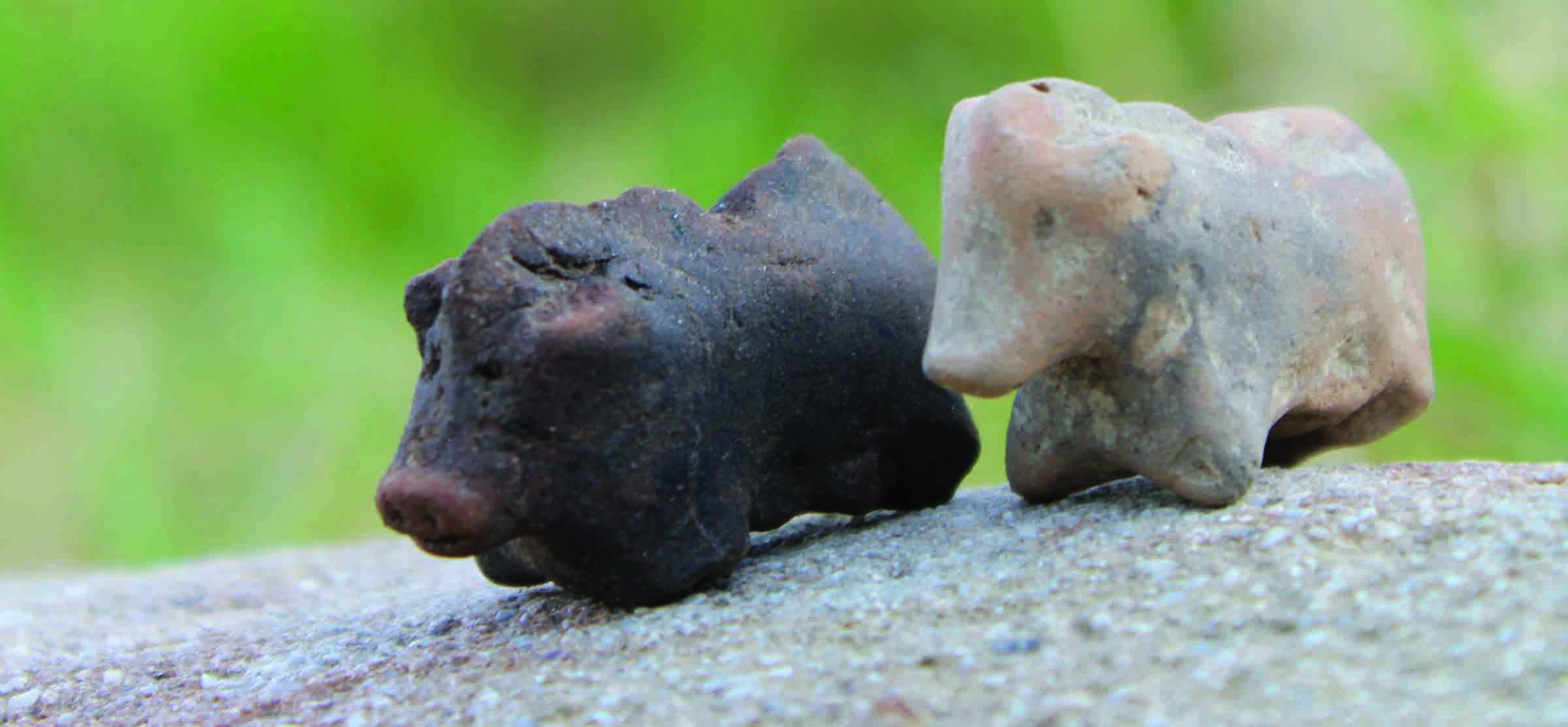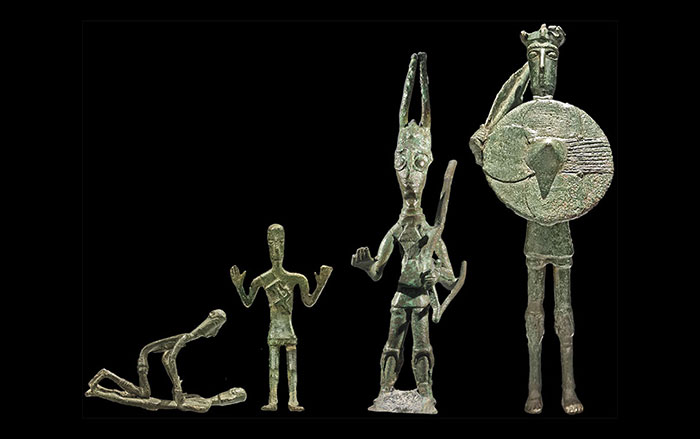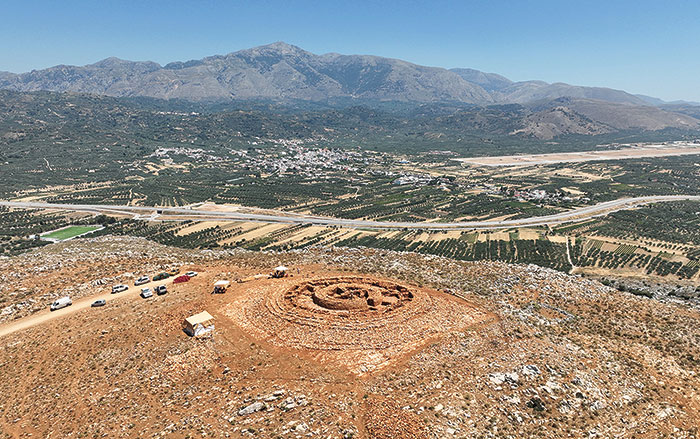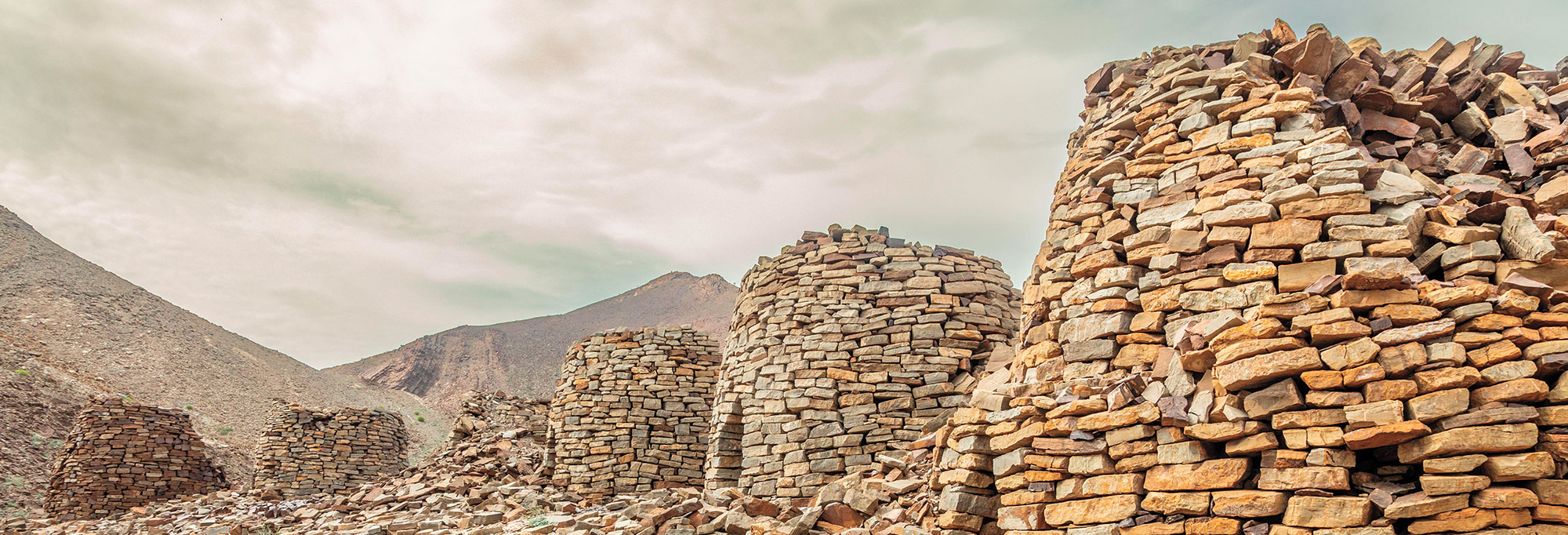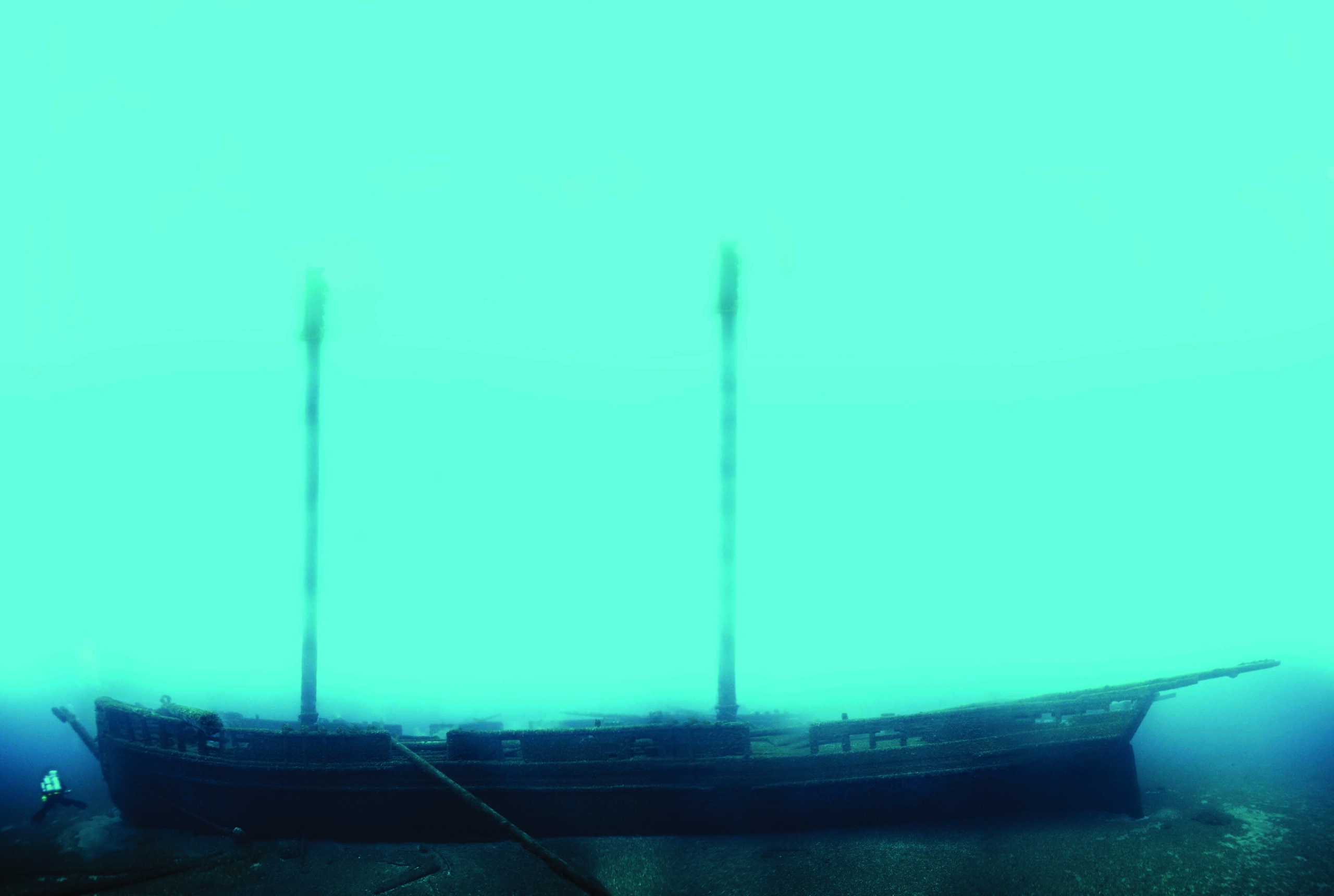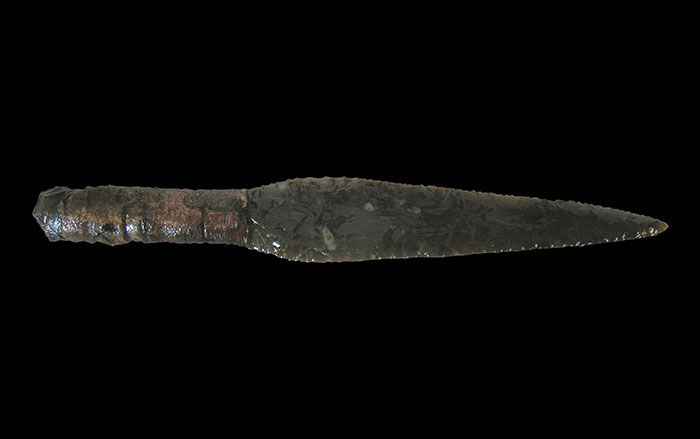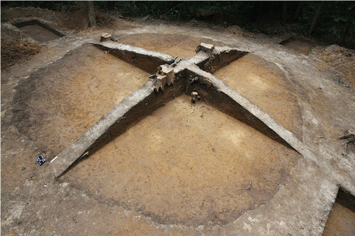
KRAKOW, POLAND—A Bronze-Age burial mound found in a forest in southeastern Poland through the use of Lidar technology has yielded five burials and a World War I firing post. “Importantly, the mound is the first known structure of this type in the Lublin Upland, as well as throughout [southern Poland], probably dating back to the turn of the third and second millennium B.C.,” Piotr Wlodarczak of the Polish Academy of Sciences told Science & Scholarship in Poland. Four graves of the Strzyżów culture were excavated. “The burial rite is slightly different than in the earlier period, the late Neolithic. The mound we examined had not been raised a single grave of a chosen person, but a few graves,” he added. The largest grave had been placed in the center of the mound. All of them contained hundreds of beads made from clam shells, copper jewelry, animal fang pendants, and flint tools. Rifle shells, shrapnel, and an iron fitting from an ammunition basket suggest that the top of the mound had been used as a firing post during the First World War. For more on Bronze Age Poland, see "4,000-Year-Old Ritual Site Discovered in Poland."


